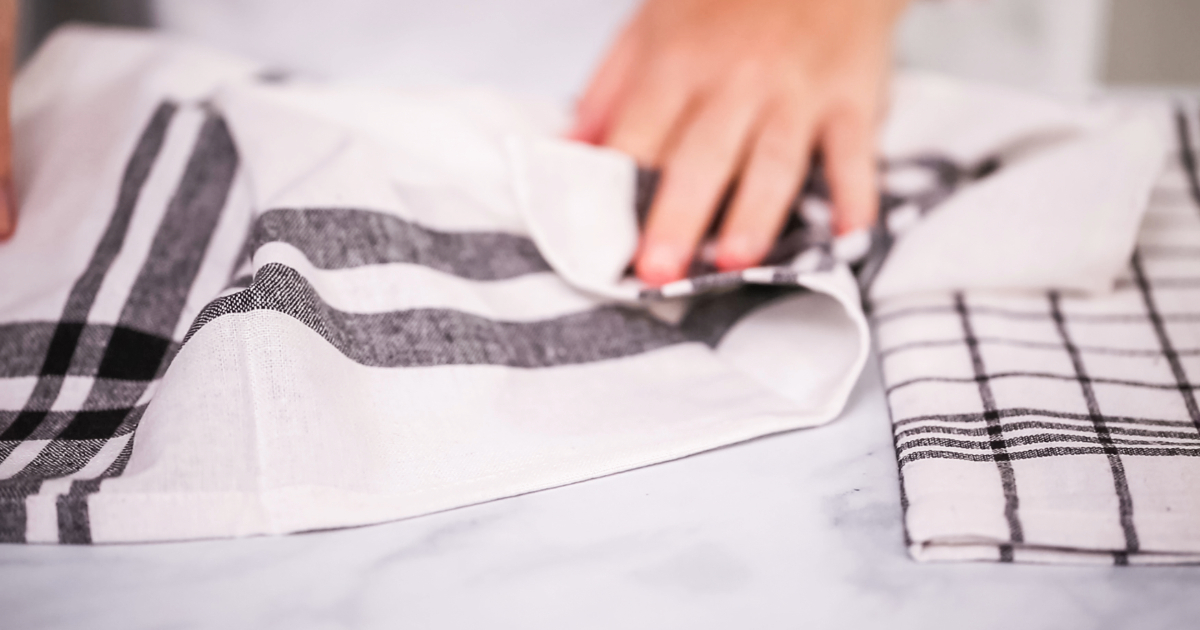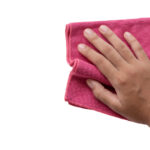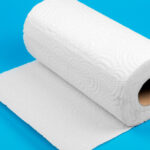Dish towels are great for drying dishes, wiping counters, covering rising dough, and more. Buying good quality dish towels can get expensive, but making your own is an easy and affordable alternative.

With just some fabric, thread, and basic sewing skills, you can create custom dish towels to match your kitchen decor or give as gifts.
Choosing the Best Fabric for Absorbent Dish Towels
The key to a good dish towel is absorbency. You want it to soak up water quickly from hands, dishes, and counters.
Natural fibers like cotton and linen work best. They absorb moisture well and are more durable than synthetic fabrics. Here are some good options:
The weave of the fabric also affects absorbency. Very loose weaves won’t soak up much water. Look for fabrics with a tighter weave. To test, hold the fabric up to light. If you can see a lot of light passing through, the weave is too loose.
Key Takeaway: Choose medium to heavyweight 100% cotton, linen, or blends for absorbent dish towels. Stay away from synthetic fabrics like polyester.
What Size to Cut Dish Towels
There is no standard dish towel size, but a good guideline is:
A standard fat quarter of fabric is 18″ x 22″, which is a good size for smaller dish towels. For larger towels, you may need to cut rectangles from yardage.
To figure out how much fabric you need, first decide on the finished size of your towels. Then add 1 inch all the way around for seam allowances.
For example, for an 18″ x 28″ towel:
Finished size: 18″ x 28″ With seam allowances: 20″ x 30″
So you would cut a 20″ x 30″ rectangle from your fabric.
Key Takeaway: Standard dish towel sizes range from 16-20″ wide x 24-30″ long. Add 1″ around for seam allowances when cutting fabric.
Sewing Your Own Dish Towels
Making a dish towel is a very easy beginner sewing project. All that’s involved is hemming the edges. Here are step-by-step instructions:
1. Pre-wash Fabric
Pre-wash your fabric before sewing. This will prevent shrinkage and allow the fibers to relax so the fabric is more absorbent. Use hot water to maximize shrinkage now versus later.
2. Cut Fabric
Cut your fabric pieces to the desired dimensions plus 1″ added all around for seam allowances. Straighten and square up the edges.
3. Hem the Towel
The most common way to hem a towel is:
This creates a nice narrow 1/2″ hem. For hand sewing, use a whip stitch or running stitch.
4. Finish Edges (optional)
For extra durability, finish the edges with pinking shears or a zigzag stitch.
5. Wash and Dry
To maximize softness and absorbency, wash towels before first use. Tumble dry on medium or high heat. The heat helps set the size and shape.
Adding Loops, Ties, and Hangers
It’s nice to have a way to hang dish towels for drying and storage. Here are some easy options:
Hemstitching for a Decorative Touch
Hemstitching adds an extra decorative detail along the hem. It creates a delicate open ladder-like design.
To hemstitch by hand:
Many sewing machines have hemstitching feet that attach to make this easier. Refer to your manual.
Embellishing and Decorating Your Towels
Plain white dish towels are classic, but you can also decorate towels to match your kitchen or add some flair. Here are ideas:
Best Practices for Making Absorbent Towels
Follow these tips to make super absorbent dish towels:
Making your own dish towels is an easy weekend project. In just an afternoon, you can sew up a stack of custom towels to use in your kitchen or give as gifts. With so many options for fabrics, colors, and embellishments, you can create towels to match any style.
FAQs
What is the best fabric to use for dish towels?
Opt for 100% heavyweight cotton, linen, or a cotton/linen blend. Avoid lightweight quilting cottons or fabrics with synthetics.
What size should I make dish towels?
Standard sizes are 16-20″ wide x 24-30″ long. Fat quarters (18″ x 22″) work well for smaller towels.
What kind of thread should I use?
Use all-purpose polyester or cotton thread that matches your fabric. Avoid nylon thread as it can degrade over time.
How can I add a hanging loop?
Cut a strip of twill tape or ribbon about 5″ long. Fold in half. Insert in a top corner while hemming.
What’s the best way to wash homemade towels?
Wash in hot water without fabric softener. Tumble dry on high heat to maximize softness and absorption.
Can I make towels from flannel?
Yes, 100% cotton flannel makes very soft and absorbent dish towels. Just be sure to preshrink it well.
What can I use to decorate or embellish towels?
Some ideas are applique, embroidery, fabric paint, stenciling, ribbon, pom poms, or printed cotton fabric.
Is there an easy way to add hemstitching?
Many sewing machines have hemstitching feet. Or hemstitch by hand by pulling out threads and sewing over space.
How do I print designs on towels?
Use fabric paint and stencils, stamps, or fabric markers to add printed designs. Set paints with an iron.
Can I make towels without sewing?
You can use iron-on hem tape instead of stitching to finish the edges of no-sew dish towels.
What kind of closure should I use for a towel apron?
Ties, velcro, or button straps/loops work well for dish towel aprons. Make them long enough to tie at waist.
How can I give homemade towels as gifts?
Wrap towels around baked goods, tie with ribbon, and include a tag with care instructions. Or display folded in a basket.
Conclusion
With some basic sewing skills and inexpensive supplies, you can easily make your own dish towels. They make great gifts, and you can customize them to match your kitchen decor.
Making your own towels allows you to pick fun colors and prints. With all the options for fabrics and embellishments, you can create towels that are totally unique to you and your style.








